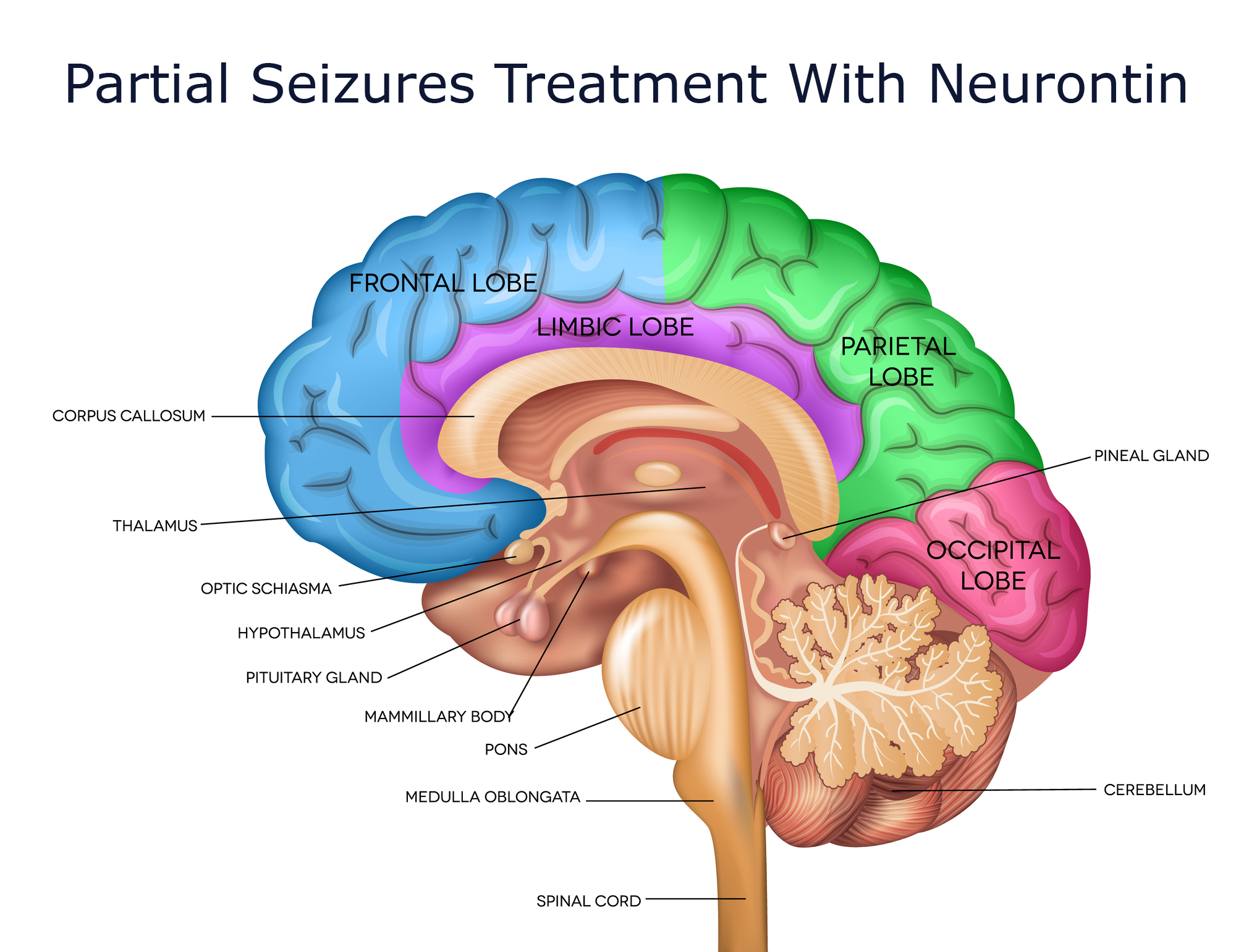Partial Seizures Treatment

Partial seizures are an unpleasant condition of the body. They can be neutralized by taking constantly prescribed medications. Neurontin has proved to be a good medicine for treating partial seizures.
Neurontin is a drug prescribed by doctors against the cramps of the limbs. In its structure, it is similar to a transmitter between neurons and actuating cells (neurotransmitter) of gamma-aminobutyric acids.
The active substance of the drug contacts with the alpha 2-beta subunits of the potential-dependent calcium channels.
The latter action provokes a decrease in the flow of calcium ions, as well as a decrease in the possibility of the formation of pain sensations of a neuropathic nature.
Dosage instructions
Partial seizures (monotherapy for children over 12 years old and adults):
an effective dose is 0.9-3.6 g per day. Treatment can be started with a dose of 0.3 g 3 times a day or the dose can be gradually increased to 0.9 g under a scheme similar to that used for the therapy of neuropathic pain in adults. Then the dose can be increased to a maximum of 3.6 g per day, divided into 3 equal doses. When taking 4.8 g per day, a good tolerability of the drug was observed.
Partial seizures (as part of complex therapy in children 3-12 years):
the initial dose is determined based on the calculation – 0.01-0.015 g per 1 kg of body weight per day, divided into 3 equal doses. Within 3 days the dose is gradually increased to an effective dose of 0.04 g per 1 kg of body weight (children 3-5 years old) and 0.025-0.035 g per 1 kg of body weight (children 5 years and older) per day divided into 3 equal doses. Good tolerability was observed when taking no more than 0.05 g of the drug per 1 kg of body weight per day for a long period.
It is advised for children and adults not to miss an interval of more than 12 hours between Neurontin doses to avoid the resumption of seizures.
There is no need to control the concentration of gabapentin in the blood plasma. The drug can be used in combination with other anticonvulsant drugs without taking into account changes in its concentration in the blood plasma, or other anticonvulsants in the serum.
Common side effects of Neurontin in the therapy of partial seizures:
Cardiovascular system:
hypertension or symptoms of vasodilation;
Digestive system:
gingivitis, anorexia, flatulence, abdominal pain, nausea and/or vomiting, dryness of the oral cavity or pharynx mucosa, increased appetite, indigestion, diarrhea, dental diseases, constipation;
Hemopoietic system:
purpura, a decrease in the concentration of white blood cells, leukopenia;
Musculoskeletal system:
arthralgia, myalgia, fractures;
Nervous system:
headache, hostility, anxiety, paresthesia, strengthening, weakening or lack of reflexes, hyperkinesia, dizziness, muscle twitching, tremor, thinking disorder, drowsiness, nystagmus, nervousness, insomnia, emotional lability, dysarthria, depression, coordination disorder, confusion consciousness, ataxia, amnesia;
Respiratory system:
respiratory infections, bronchitis, pneumonia, rhinitis, pharyngitis, cough; Skin: skin rash, skin itching, acne, abrasions;
Sense organs:
vertigo, impaired vision, diplopia, amblyopia;
Genitourinary system:
impotence, urinary tract infection.
Common side effects of Neurontin in the additional therapy of children of 3-12 years old:
Digestive system:
nausea and/or vomiting;
Nervous system:
hyperkinesia, dizziness, emotional lability, hostility, drowsiness;
Respiratory system:
respiratory infection, bronchitis.
When performing a monotherapy of partial seizures with secondary generalization and without it, the efficacy and safety of the drug in children under 12 years old have not been established.
When using Neurontin as an additional agent in the treatment of partial seizures with secondary generalization, the safety and efficacy of the drug in children under 3 years old have not been established.